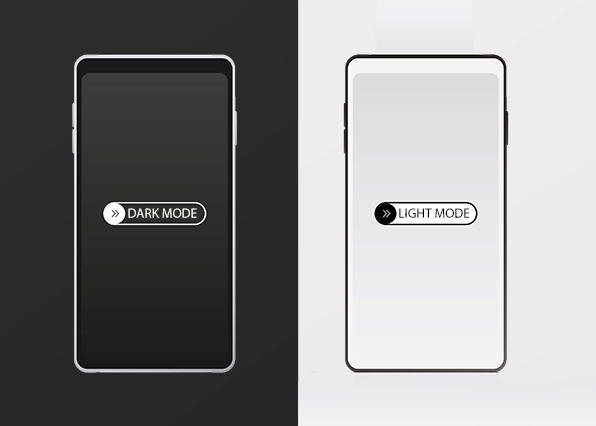In the world of website design it is crucial to keep on top of the latest trends so that a website does not look outdated. In this day and age users expect websites to look modern and provide a good user experience. Keeping up with current design patterns will help keep visitors on a website.
One trend which seems to be making a comeback is the use of dark mode. This is a computer user interface design technique where light text and icons are placed onto a dark background. We have taken a look into why dark mode is becoming more popular and explored the possibility of dark mode being here to stay.

The Science
Research published in 2013 by psychologists Cosima Piepenbrock and Susanne Mayr concluded that “In an ageing society, age-related vision changes need to be considered when designing digital displays. Visual acuity testing and a proofreading task revealed a positive polarity advantage for younger and older adults. Dark characters on light background lead to better legibility and are strongly recommended independent of observer's age.”
The research conducted by the Sensory Perception and Interaction Research Group, at University of British Columbia has been used several times in discussions about this topic. It was cited by Gizmodo in 2014 and the research determined that: “People with astigmatism (approximately 50% of the population) find it harder to read white text on black than black text on white. Part of this has to do with light levels: with a bright display (white background) the iris closes a bit more, decreasing the effect of the “deformed” lens; with a dark display (black background) the iris opens to receive more light and the deformation of the lens creates a much fuzzier focus at the eye.”
The fuzzy experience they talk about is related to Halation which occurs when light spreads past a certain boundary, creating a foggy or blurry appearance. While it might be easier to look at a dark screen, rather than a glaring bright one, using a dark screen causes our pupils to dilate more in order to take in information. This is why Halation happens.
On the other hand, A scientific report dubbed "Reading and Myopia: Contrast Polarity Matters", conducted by Andrea C. Aleman, Min Wang, and Frank Schaeffel comes to the conclusion that dark mode is considerably less harmful to your vision in the long run than light mode.
While the Science mainly seems to guide designers and users to stay away from dark mode, there must be some positives for it in order for it be seen as a design trend to keep an eye on.
Reasons to use dark mode
- Improved sleep: Bright screens are known to cause severe digital eye strain in low light conditions and can also suppress melatonin production, which can impede our sleep. With many people spending on average 11 hours a day in front of a screen, being able to use dark mode could help with dry and itchy eyes which can stop people from falling asleep.
- Saves on battery: Previously high-tech firms such as Android have talked about how dark mode can prolong battery life. They announced that maximum white ate up six times the battery power as maximum black.
Overall there are a couple of reasons why having a dark mode of a version is useful. On the practical side it reduces strain levels on the eyes, while aesthetically it can produce an ultra-modern presentation. Take a look at why this is becoming a website design trend here.
Conclusion
While there are certain occasions where using dark mode could be appropriate, it is still strongly apparent that the use of the traditional light mode should be used most of the time. This is illustrated when it comes to user experience, as the science states that light mode is more accessible, and therefore will provide users with content which they can read and understand with greater ease.